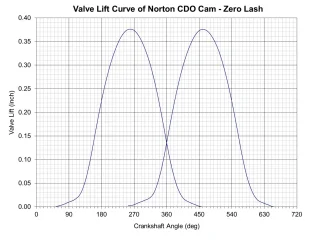To get the figures you want you or someone would have to actually measure a known good cam. That is a problem industry wide as various cam makers use various lift points for measurement. As I read it, the dynamic compression ratio should be calculated from the end of the clearance ramp, not at .050 lift. Of course the effects of that .050 lift will diminish as RPM increases but what one likely wants to know is how the engine behaves at low to mid RPM such as coming out of a turn.
And all these figures assume that the cams are ground "to spec," a dubious assumption. A cam I put in my pickup long ago has always had noisy tappets. Last time I had it apart, with degree-wheel and dial-indicator attached, I checked it against the cam card. The lobe-centers and lift are correct as are the .050 specs but the advertised duration is way short, meaning the clearance ramps are short, which explains the noisy tappets. Being a working truck engine, I don't dare set the clearances much tighter but I dislike the noise. Plus, this cam has an early-opening exhaust valve that does, indeed, create a noisy exhaust. And as I use it as an RV (carrying a camper) the noise bothers me and aside from that, the exhaust manifold temperatures are higher and it tends to burn out gaskets. I would like to change cams if I can find one that suits me, which brings us back to the .050 spec issue.



